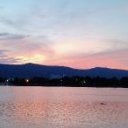Home irrigation from well water
-
Recently Browsing 0 members
- No registered users viewing this page.
-
Topics
-
-
Popular Contributors
-
-
Latest posts...
-
36
HELP !
I have a few pairs of these, they've had rather a lot of ermm...service, one might say. I bought them on a recommendation from Mr@Cameroni Are you interested? -
163
Is Trump actually doing a better job than you expected?
By all means. Tell us the details -
70
What Thai cities float your boat?
Why would anyone explain anything to you? Your standard answer to such questions .............. -
-
3
More than half of young people have considered leaving UK under Labour
That headline is a real stretch....especially considering 90% of 'young' people probably don't even know who is in power. -
163
Is Trump actually doing a better job than you expected?
What about them isn’t true? I’m sure you’ll post your beloved “links” proving they’re all false.
-
-
Popular in The Pub


.thumb.jpg.d9f3e54432a0ae65f4d5beb0d2d122ce.jpg)








Recommended Posts
Create an account or sign in to comment
You need to be a member in order to leave a comment
Create an account
Sign up for a new account in our community. It's easy!
Register a new accountSign in
Already have an account? Sign in here.
Sign In Now